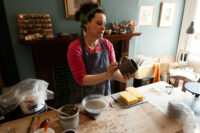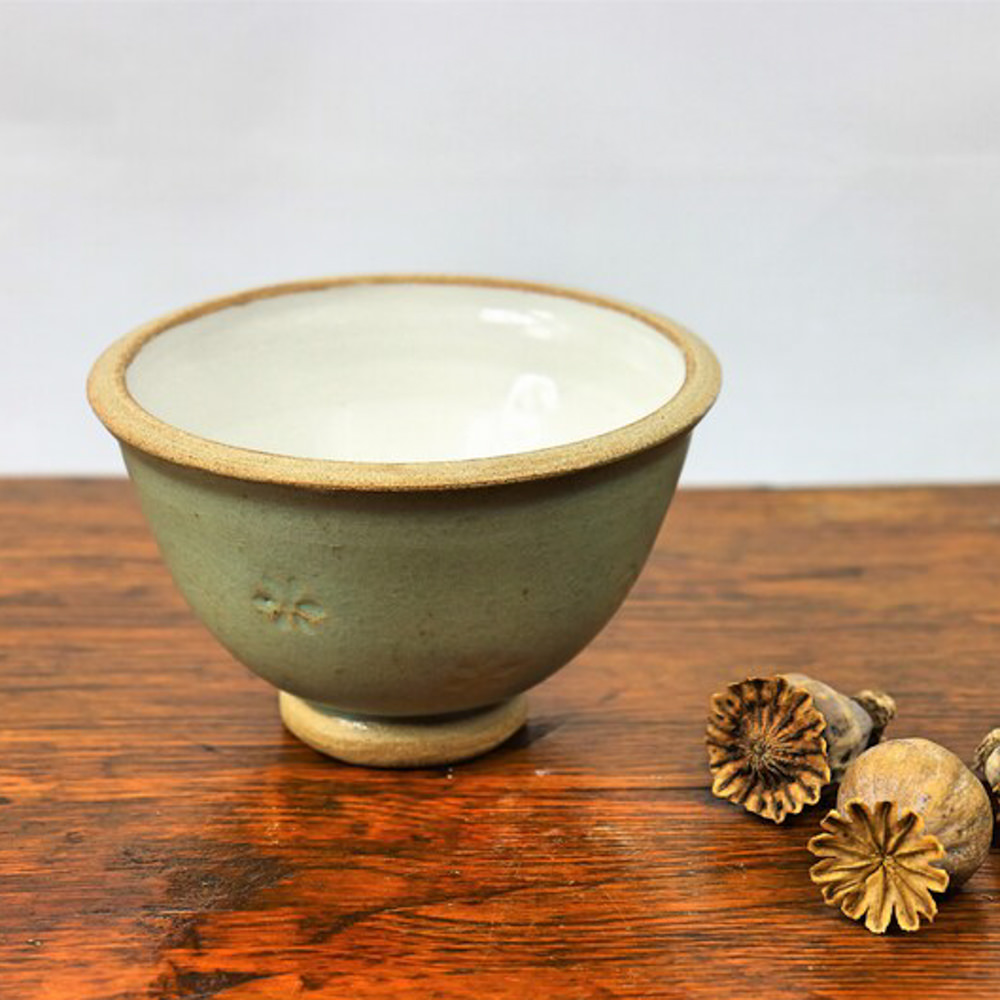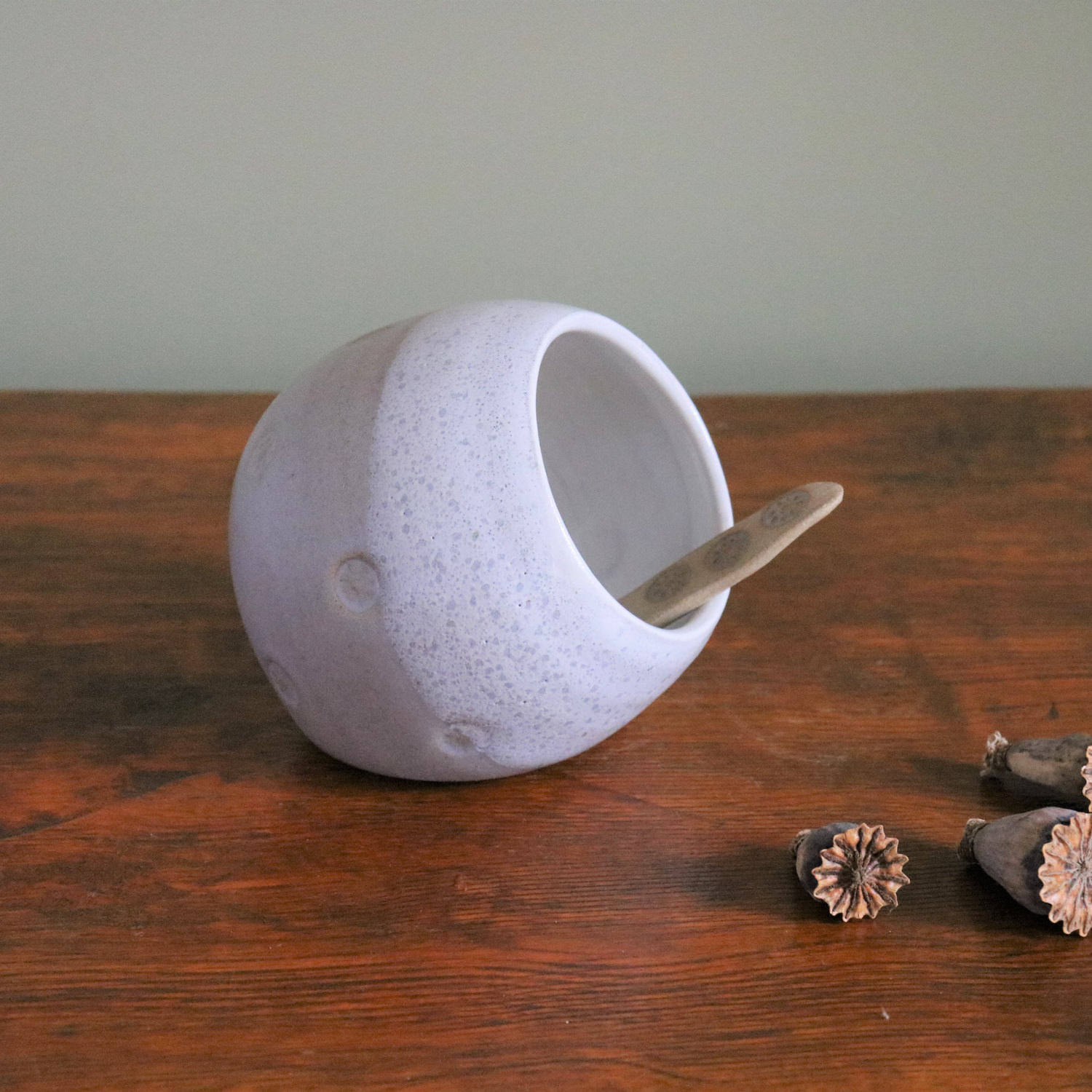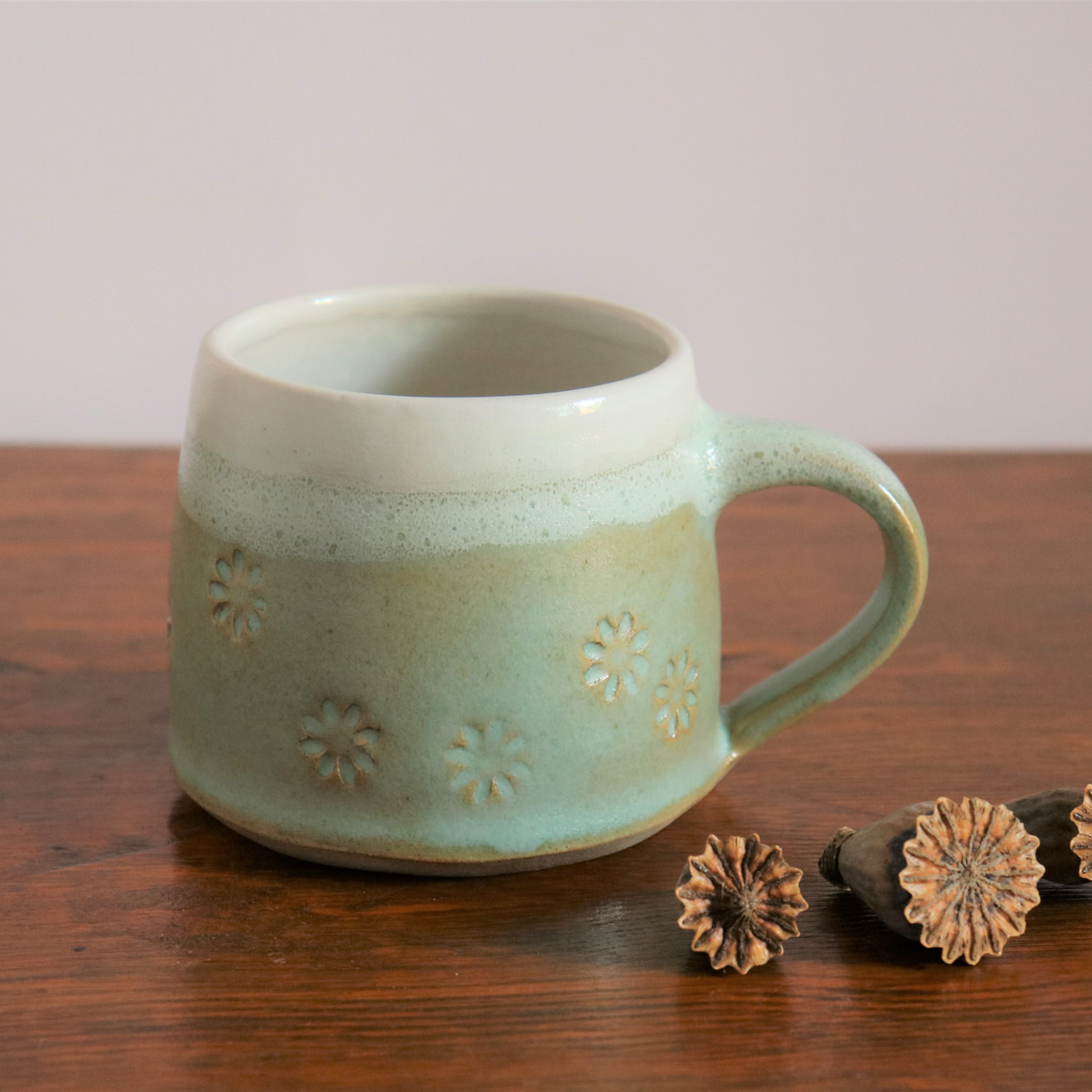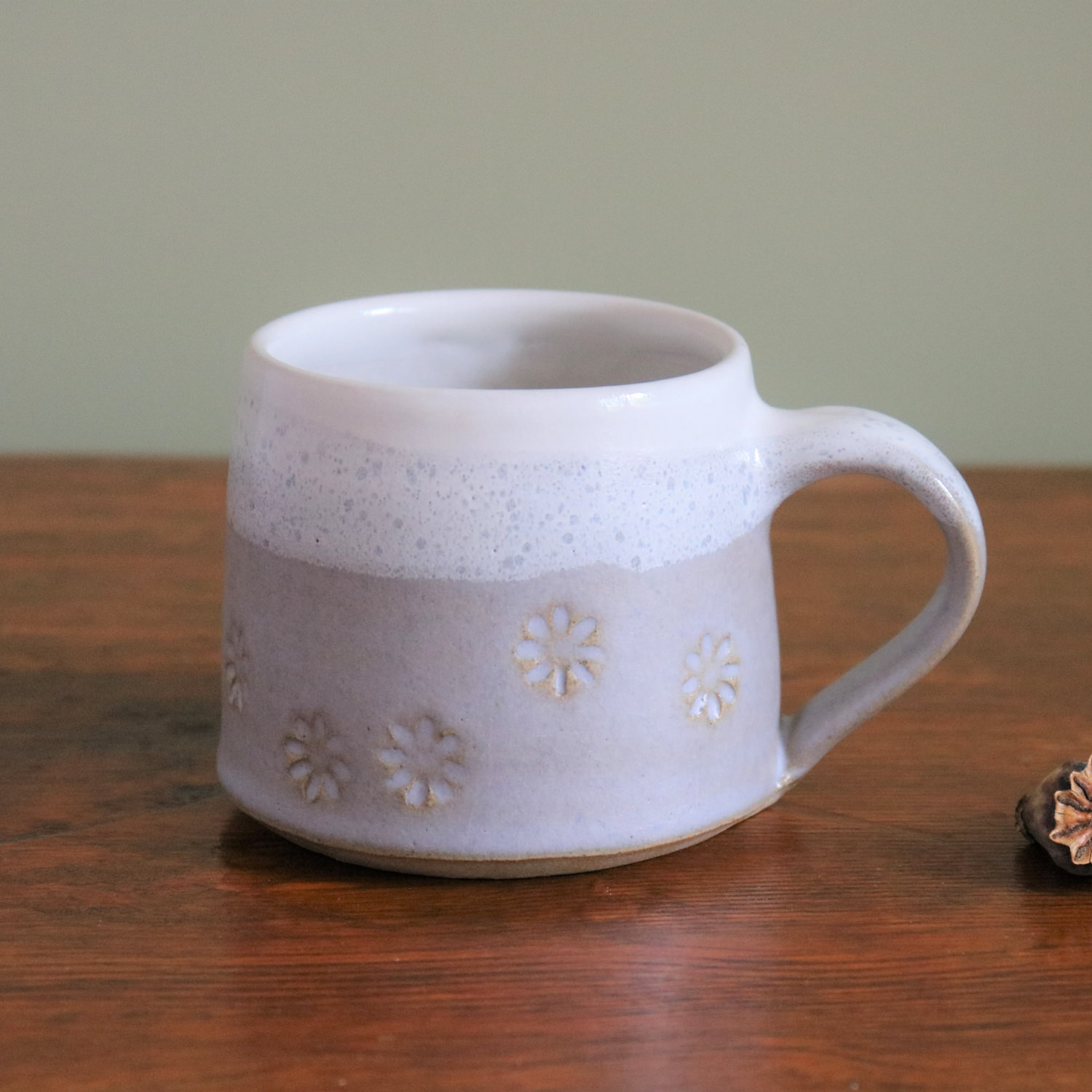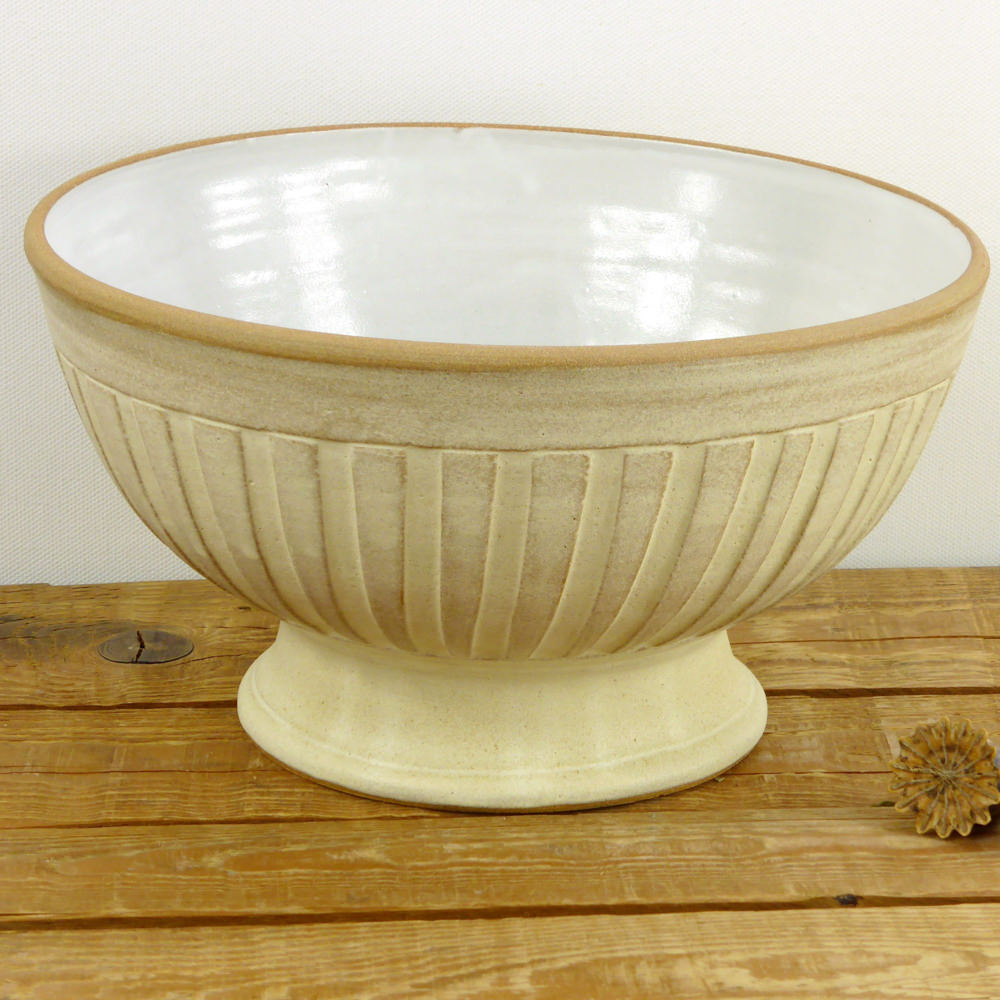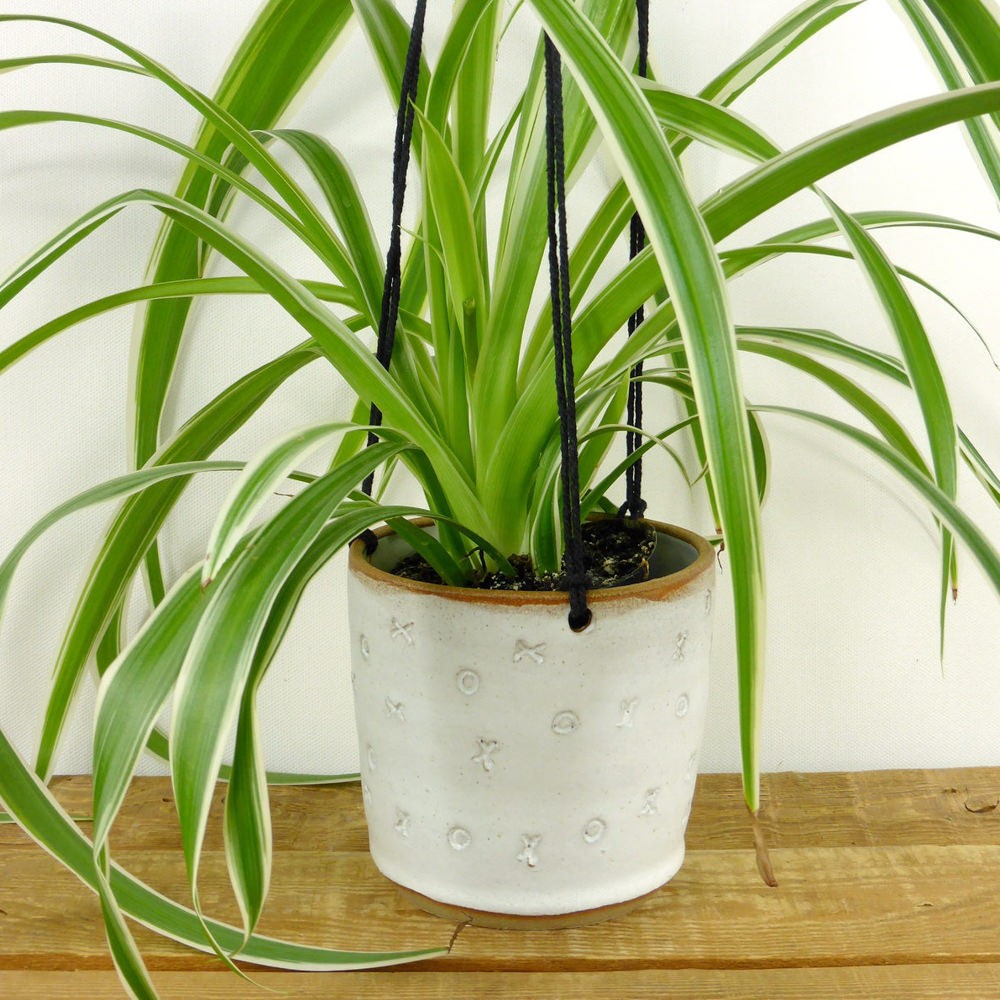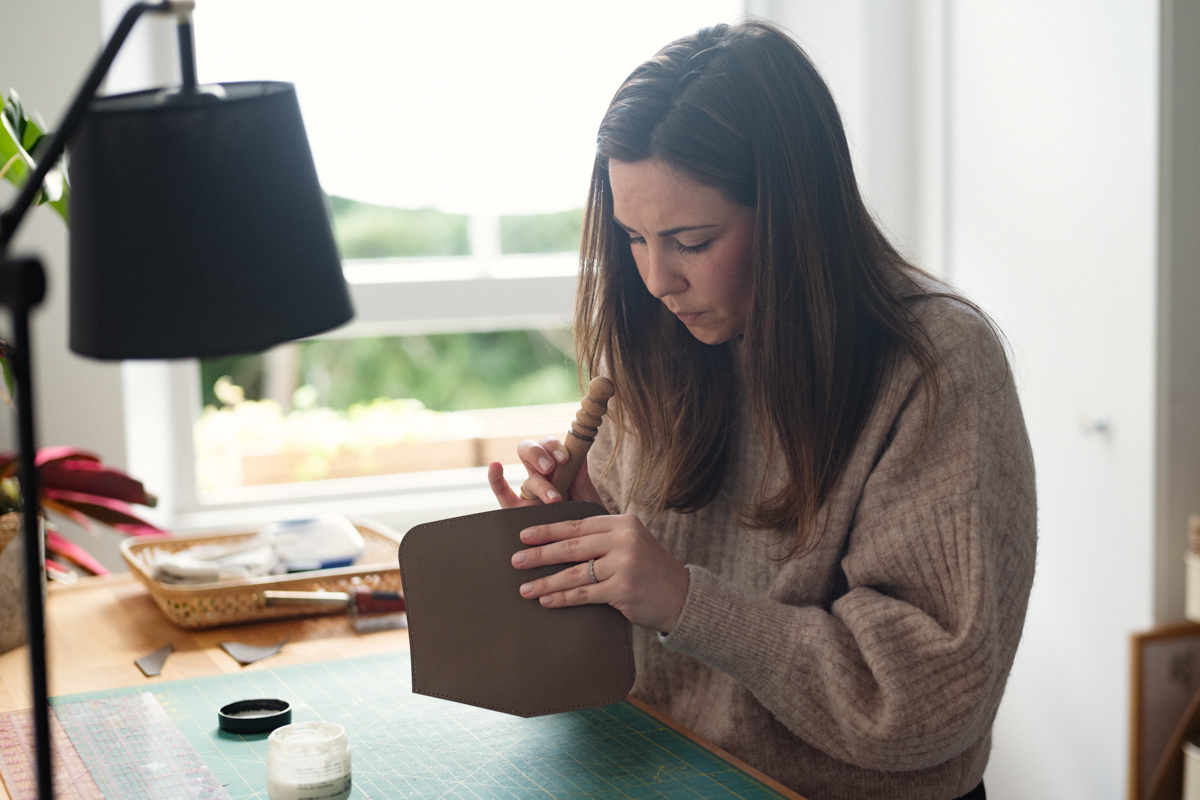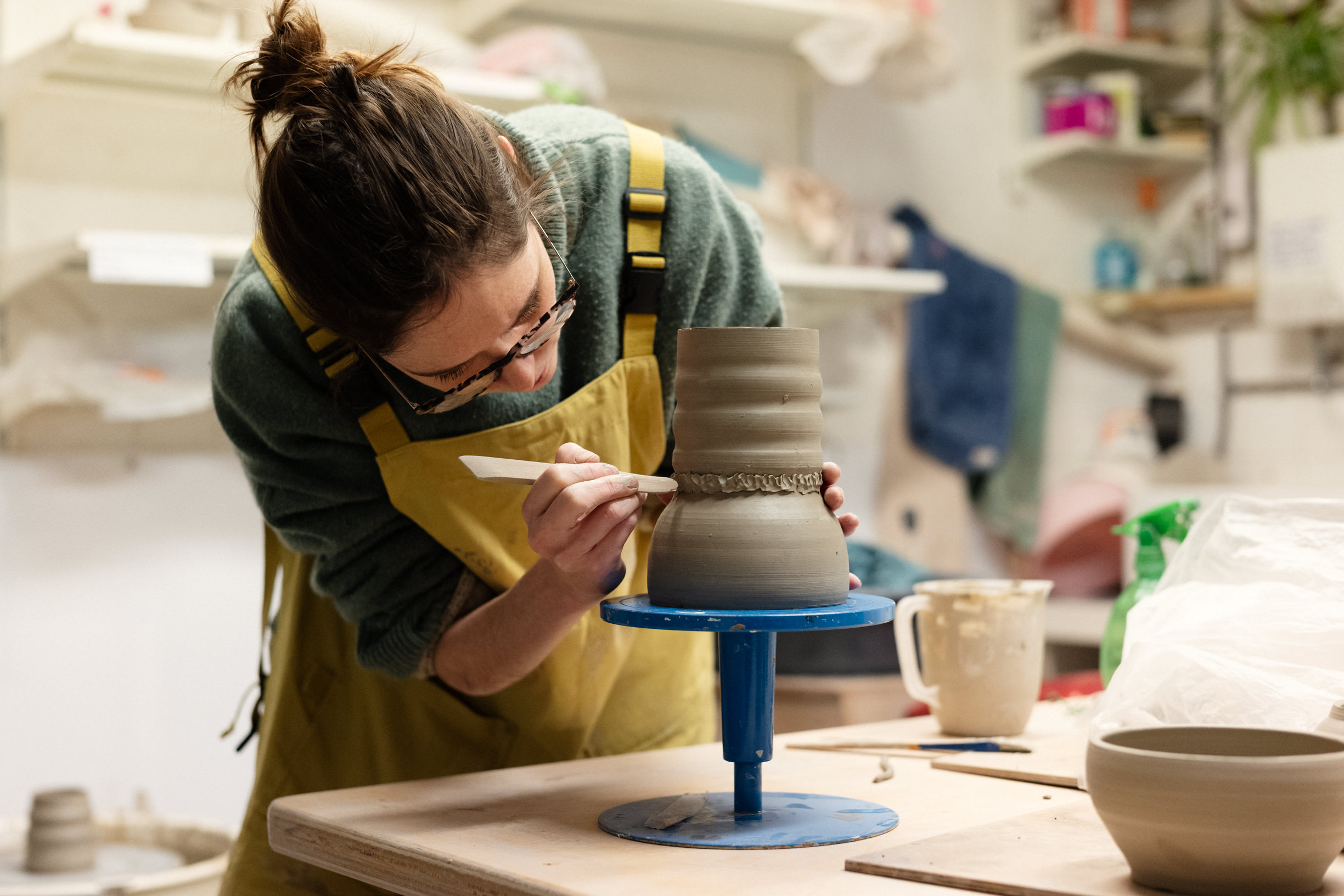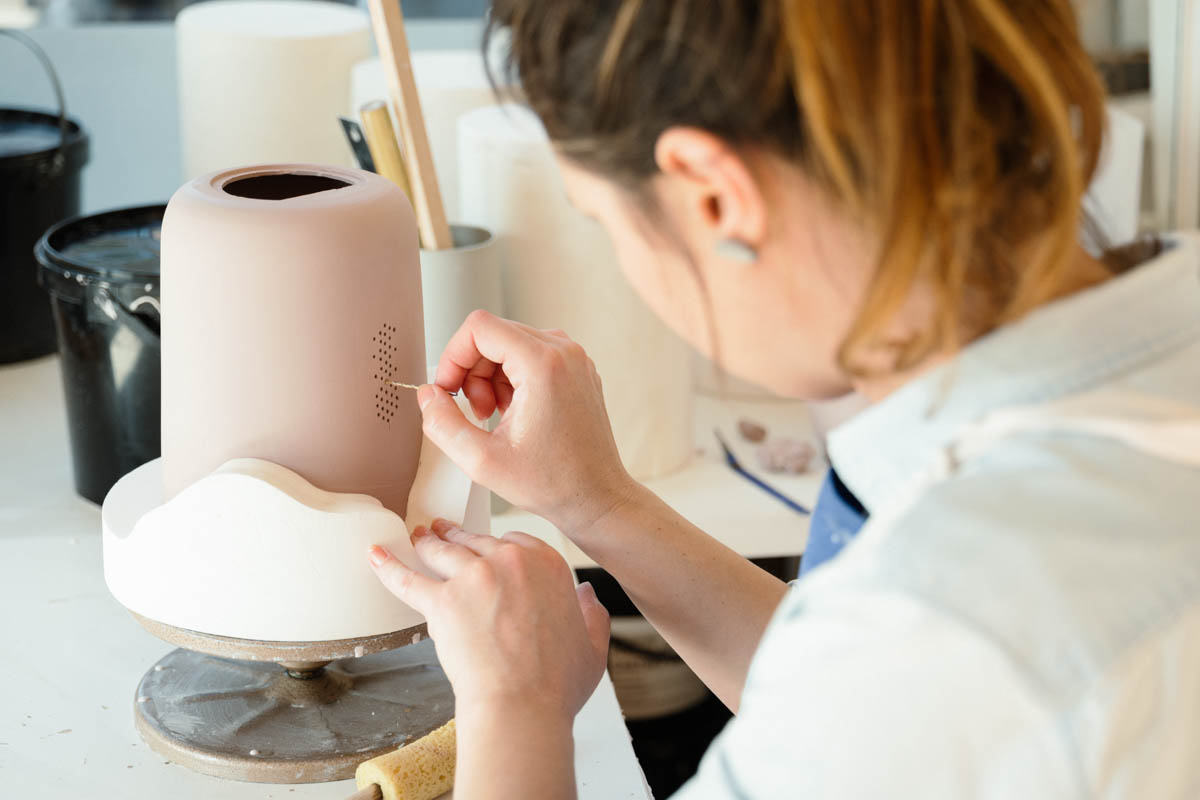In this edition of “Stories with Skills,” we explore the artistic journey of Rebecca Woods, a potter with a unique trajectory from psychotherapy to the intricate world of ceramics. With a background in Art Photography, Rebecca’s transition seamlessly aligns with a lifelong dedication to the craft. We delve into the nuanced influence of psychotherapy on her creative process, the transformative moment that led her to embrace pottery full-time, and her distinctive approach to crafting bespoke glazes. Drawing inspiration from British Studio Pottery and captivated by Japanese and Korean traditions, Rebecca shares profound insights into techniques like Mishima and the meaningful integration of keepsake objects into her work. Join us on this enlightening journey into the world of Rebecca Woods, where each creation blends aesthetic allure with the cherished touch of handcrafted memories.
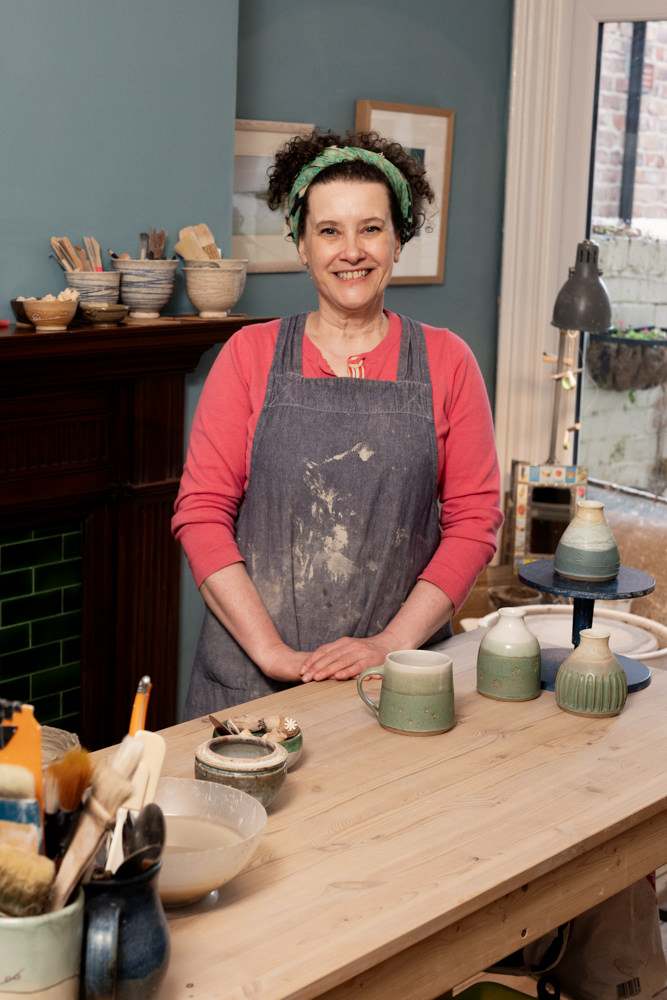
Rebecca Woods
Before my Psychotherapy career, I pursued a degree in Art Photography. This shift doesn’t feel massive to me because the essence of creating through arts, crafts, and a life dedicated to making has always been a part of me. Regarding the creative process, I understand the importance of emotional self-care — the notion that one’s worth extends beyond their creations, and that productivity doesn’t solely define one’s value. Yet, it’s a constant challenge to remember this truth, and there are times when I feel like I fall short.
For about a year, I’d been contemplating a change in my life. While I deeply enjoyed my work in Psychotherapy, I wasn’t certain if pursuing an MA in the field was what I truly sought. I had been attending pottery classes on and off most of my life, and the realisation struck me unexpectedly one day, it was a genuine light bulb moment – I could take a break and dedicate time to pottery. This epiphany felt like a revelation, and I felt incredibly fortunate to be in a position where I could pursue this new path.
I draw inspiration from the rich tradition of British Studio Pottery, finding guidance and friendship in the mentorship of Mike Dodd. Within this tradition, creating one’s own glazes is the standard practice – a norm upheld in all the pottery studios I’ve frequented. I strongly believe that this approach imbues each piece with distinct character and individuality.
I love the Mishima technique, which I’ve utilized extensively in both my decorative pieces and my ongoing art project centered on childhood memories. Originating from Korea in the 16th century, Mishima involves inlaying colored slip into intricately carved lines and imprints.
To achieve the surface decoration, I employ a variety of methods, including imprinting with handmade stamps and repurposing items like buttons from my mother’s old collection and various found objects from around the house—a single earring might just find its way into the artwork!
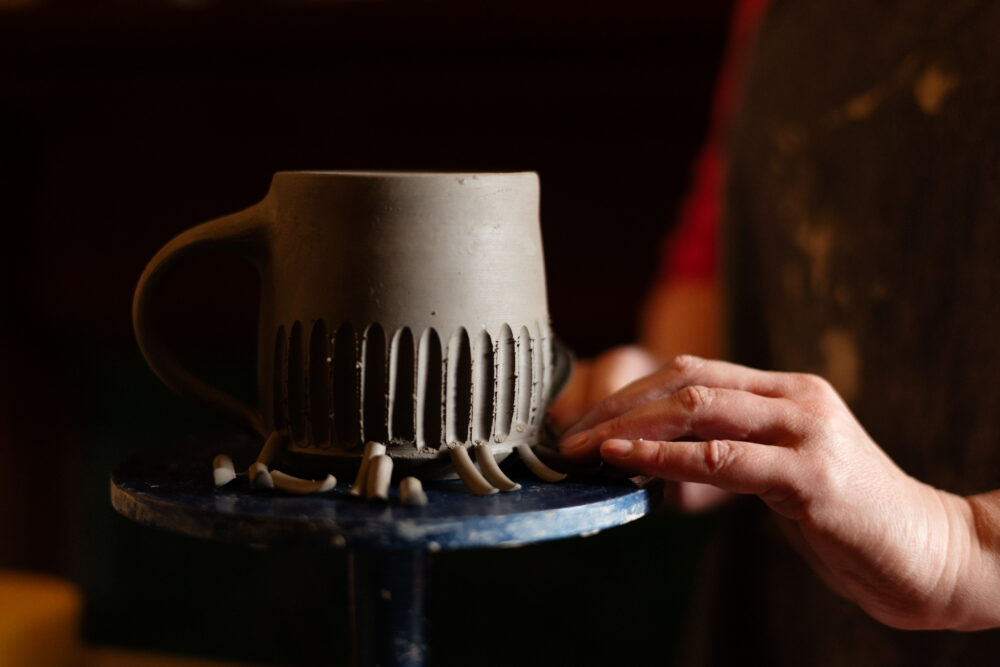
I tend to collect things which I perceive as precious little objects, often not of financial value. Sometimes they carry significant meaning or memories or, in the case of the earring, the desire to make use of something which has lost its use.
I genuinely hope that people find enjoyment in my creations, whether for their aesthetic appeal or practical use. Ensuring that a mug comfortably nestles in one’s hand is crucial to me; if it doesn’t, I know it won’t see much use!


